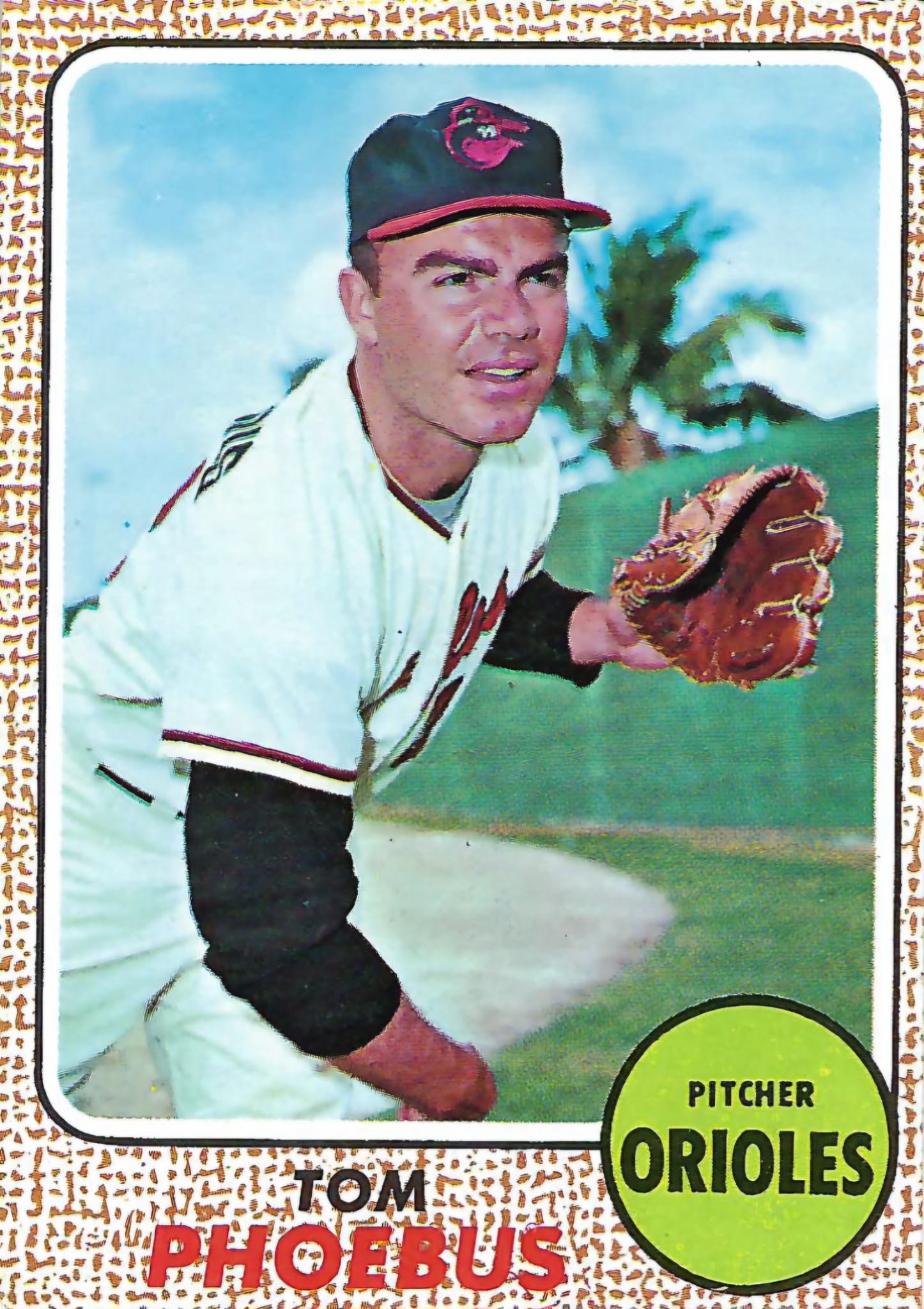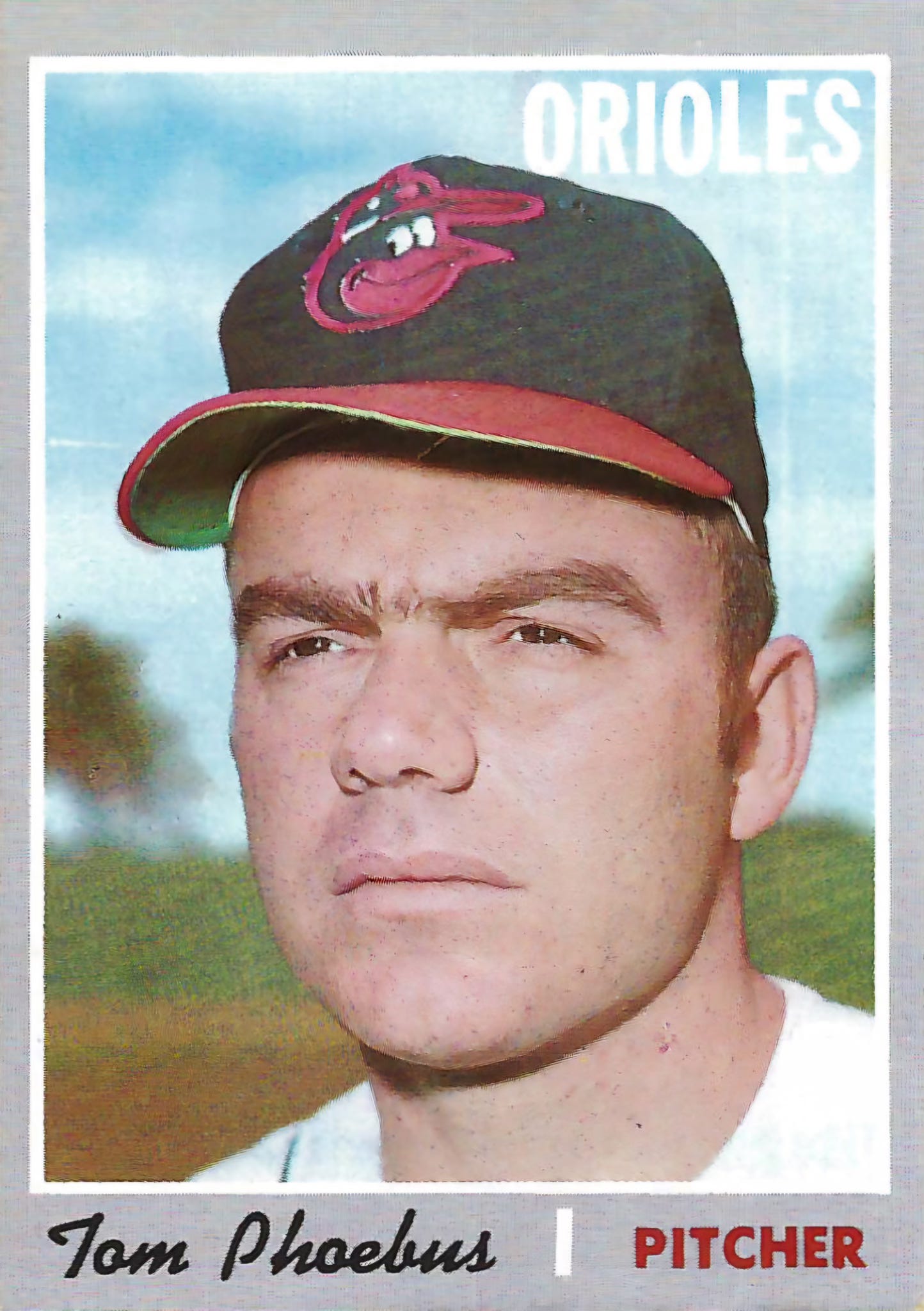The Hometown Hurler
Growing up in Baltimore in the late ‘50s, Tom Phoebus dreamed of pitching for the Orioles. Once that dream came true, he made the kind of history that endures.
As a moment of sheer baseball perfection, Tom Phoebus’ major league debut seemingly was impossible to top.
A right-handed pitcher, Phoebus was a true child of Baltimore, having grown up in Remington, played CYO baseball and attended Mount St. Joseph High School in Irvington. In the late ‘50s, he and his buddies regularly took the bus to Memorial Stadium, rooted for the Orioles and razzed the opposition from the bleachers. On September 15, 1966, at age 24, after percolating for six years in the minors, he took the mound for his hometown team with his mother, younger brother and dozens of other relatives and former neighbors in the seats on a damp night at Memorial Stadium. Phoebus threw a complete-game shutout, striking out eight California Angels.
What a way to begin your major league career.
But Phoebus did top it.
Five days later, he threw another complete-game shutout, beating the Kansas City Athletics and their ace, Jim “Catfish” Hunter, a future Hall of Fame enshrinee.
The Orioles had long wondered whether Phoebus could develop into a pitcher capable of such performances. Chunky at 5-feet-8 and 185 pounds, he had a terrific arm and a mix of pitches he could throw for strikes — just not often enough. After signing at age 18, he went 1-12 with a 5.56 ERA and walked more than one batter per inning in his first year of full-season minor league ball. The next year, he led a Class C league in strikeouts but walked 195 batters in 167 innings. You didn’t see many pitchers with that lack of command in the majors.
But Phoebus persevered. Pitching for Earl Weaver in Double A in 1963, he set a franchise record for strikeouts and lowered his ERA. The Orioles promoted him to Triple A Rochester, on the cusp of the majors, but with excellent young pitchers such as Dave McNally, Steve Barber, Milt Pappas and Wally Bunker already on their staff, they could afford to wait until Phoebus developed the command they wanted.
Fans in Baltimore grew impatient, wanting to see the hometown kid get his chance. When Phoebus tossed a no-hitter for Rochester in August of 1966, a group calling itself the Tom Phoebus Fan Club staged a protest in his old neighborhood.
Finally, a few weeks later, his chance arrived. When he became just the seventh pitcher in major league history to begin his career by throwing back-to back complete-game shutouts, it was clear he deserved more than a glancing opportunity.
Sure enough, he earned a spot in Baltimore manager Hank Bauer’s starting rotation in 1967. It was a year in which the Orioles regressed after winning the World Series the year before, but Phoebus was a bright spot. He went 14-9 with a 3.33 ERA and led the Orioles in starts (33), innings (208) and strikeouts (179) — a solid showing that earned him a nod from Bauer as the team’s Opening Day starter in 1968.
Early in the 1968 season, Phoebus topped his all-but-perfect major league debut with the ultimate achievement. He threw the third no-hitter in Orioles history.
The circumstances surrounding it didn’t suggest a special occasion was imminent. Phoebus went home with a sore throat the night before. Only 3,417 paying customers were at Memorial Stadium to see him pitch through drizzle against the Boston Red Sox on a Saturday afternoon. (More than 11,000 students also were on hand as freebie customers on safety-patrol day.) Phoebus was pitching to an emergency catcher, outfielder Curt Blefary, called into duty due to an injury to starter Andy Etchebarren the night before.
Right away, Phoebus faced a challenge due to wildness. He walked the second batter, Joe Foy, then threw a wild pitch that allowed Foy to take second base. No surprise, Foy then tried to steal third on the inexperienced catcher.
Blefary threw him out.
The Orioles’ stellar defense continued to help keep the no-hitter alive. In the third, a chopper up the middle bounced off Phoebus’ glove, but shortstop Mark Belanger corralled the ball and threw to first just in time to retire the runner. (The Sox argued the call, to no avail.) In the eighth, Boston’s Rico Petrocelli drilled a line drive between short and third, but Brooks Robinson dove headlong to his left and grabbed it.
Phoebus amassed the remaining outs without difficulty, striking out Foy to complete the no-hitter and a 6-0 victory.
“This is a great thrill — my greatest,” Phoebus said.
Blefary was practically in tears. “There is no doubt this is my biggest thrill in baseball, primarily because I’d never caught the guy before,” he said. “Tom was simply fantastic. He threw everything for a strike — fastball, curve and slider.”
The achievement put Phoebus in rarified company. Hoyt Wilhelm had thrown the Orioles’ first no-hitter in 1958. Nine years later, Barber and Stu Miller had combined on a no-hitter in a game the Orioles somehow lost.
Phoebus’ gem further burnished the lustrous quality of his major league career to that point. Although he’d spent long years in the minors beforehand, he was now among the hardest American League pitchers to hit, a dominant major leaguer pitching for the team he’d loved as a boy. The no-hitter upped his career record to 19-11 — a start that suggested big things were coming.
As it turned out, though, his best years in the majors were his first years. He won a career-high 15 games in 1968 (also lost 15) and went 14-7 in 1969, but with Jim Palmer’s ascendance and the arrival of Mike Cuellar, he started to slide in the rotation. He didn’t pitch in either the league championship series or World Series in 1969. By 1970, he was sharing the No. 4 slot in the rotation.
He did pitch in the 1970 World Series, earning the win in Game 2 for a strong performance in relief of Cuellar. But that was his last outing for the Orioles. They traded him to the San Diego Padres after that season.
His career petered out quickly once he was gone from his hometown team. After starting out in San Diego’s rotation in 1971, he wound up pitching in relief before being traded to the Chicago Cubs, who also put him in the bullpen and then traded him to the Atlanta Braves. After spending the entire 1973 season in Triple A, Phoebus retired from baseball at age 31, just seven years after his magnificent debut.
I didn’t interview Phoebus for my book on Orioles history, but I did speak to him for “Spirit of ‘66,” my 1986 Baltimore Sun series looking back at the players on the 1966 Orioles. Phoebus had moved to Florida after retiring from baseball and gone back to school to earn a teaching degree. When we spoke, he was a physical education teacher in grade schools. His baseball career seemed like ancient history, he told me, but he had a slew of good memories, as one should if he pitched a no-hitter, earned a World Series win and made history with a debut almost too good to believe.







I can remember listening to his no hitter with Chuck and Bill announcing on WBAL. I was 13 and listened to many games from northeast Pa. on my transistor radio 📻 Especially when the weather was nice and the reception better. His no- hitter was a highlight in 1968 for O's fans
John,
Excellent story on PheeBee, as we called him. I was the Rochester Red Wing bat boy in 1961 and then the “clubby” from 1962-65 and can relate to many of the players you mention in your series. It was a special time.
Bill